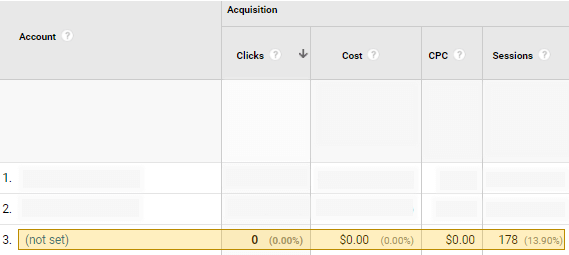We’re almost two months into 2018, so naturally, it’s time to check in on our resolutions. If you’re not checking off all your resolution boxes yet, it might be time for a new one. Might we suggest “cleaner analytics”? It may not give you the same refreshing feeling as organizing your closet, but it will help streamline your reporting. And nothing says “new year” like streamlined reporting, right? Since baby steps are crucial when it comes to sticking to your resolution, we recommend starting with these 5 quick and simple analytics updates.
1. Update Your User List
If you’ve had any staffing changes in the past year or switched vendors, it’s a good idea to review your users to be sure the list is up to date. We recommend keeping an eye out for the following:
- Previous employee emails
- Personal email accounts (Gmail, Yahoo, etc.)
- Vendors you no longer work with
- Permission levels
Remember that users can be updated at the Account, Property and View levels. From the Admin section in Google Analytics, click one of the three “User Management” sections (shown below) and review each list to ensure that users have the right permissions at the right access level. Need a refresher? Google explains permission levels here.

2. Create a Raw Data / Unfiltered View
If you have never maintained a raw data view, now is the time to start. Creating a single view in each property that is completely free of filters is a critical component of data integrity. It serves as a backup for all data from the time it is created and can also serve as a point of reference against other views. Say, for example, you apply a filter to your main reporting view and want to verify that the filter is working as expected. Using your unfiltered view, you can compare traffic to see how and if your filter is working.
3. Track Your Internal Search
Are you taking advantage of Google Analytics’ Site Search Tracking? If the answer is no, let 2018 be the year you make it happen. Internal search data is incredibly valuable. It can give insight into what areas of your site might be hard to locate, tip you off to industry trends, and even spark new content ideas. (Read more about the benefits of internal site search here.) Luckily, setup only requires a couple minor updates to your Google Analytics view settings. You’ll be analyzing users’ search behaviors in no time!
4. Link Your AdWords Accounts
With the busy and occasionally rushed process of launching a new AdWords program, linking Google Analytics and AdWords can often be overlooked. If this happens, you’ll see reports like the one below:

Indicates that “auto-tagging” is enabled in AdWords account, but the account has not yet been linked in Google Analytics.
If you launched a new AdWords account this year, you’ll want to double-check your reports to ensure you’re capturing data in Google Analytics. If you’re seeing values of (not set) as shown above in any of your AdWords reports, navigate to the “AdWords Linking” settings in your Analytics property and review which AdWords accounts are linked and to which views.
5. Check for PII
Getting your account shut down is easily the worst way to start the new year, but it could happen if you’re collecting any personally identifiable information (PII) about your visitors. This can include names, email addresses, phone numbers, or other similar data. Per the Google Analytics terms of service, you may not collect any information “that Google could use or recognize as personally identifiable information.” If you do collect this type of data, Google will send initial warnings, after which they will terminate your account and destroy your data if the issue is not resolved. What can you do to avoid collecting PII? There are a number of ways this data can be captured, including page URIs or internal site search. Review Google’s list of “Best Practices to Avoid Sending PII” here.
Much like cleaning your house, conducting periodic mini-audits of your analytics can go a long way in improving overall data cleanliness, making it easier to analyze results. In conjunction with this, we recommend setting a measurement strategy to streamline analytics management and keep settings consistent across accounts, properties, and views.
Is your Google Analytics getting out of hand? We can help rein it in. Check our Analytics and Measurement capabilities.
